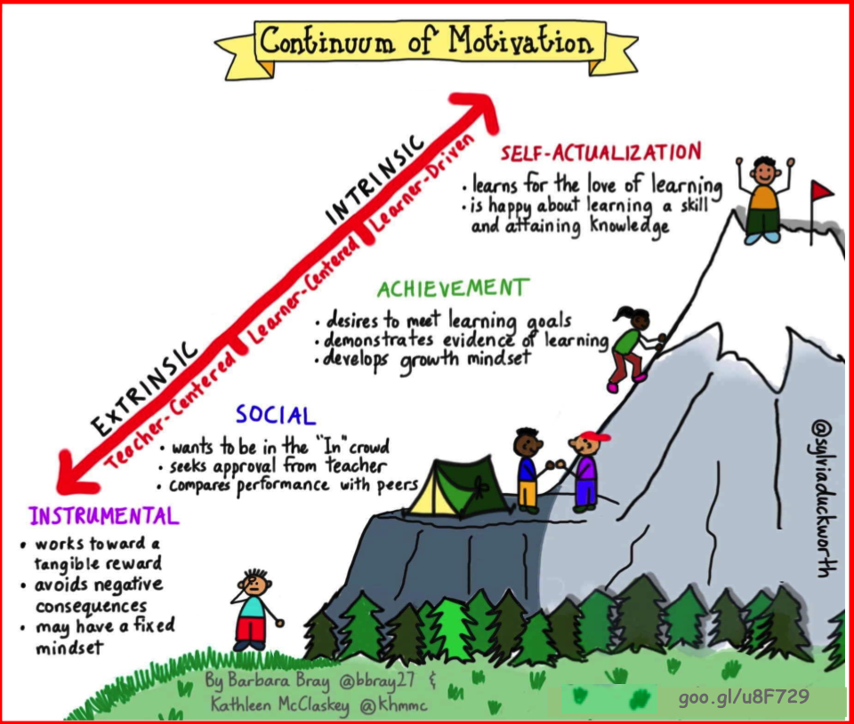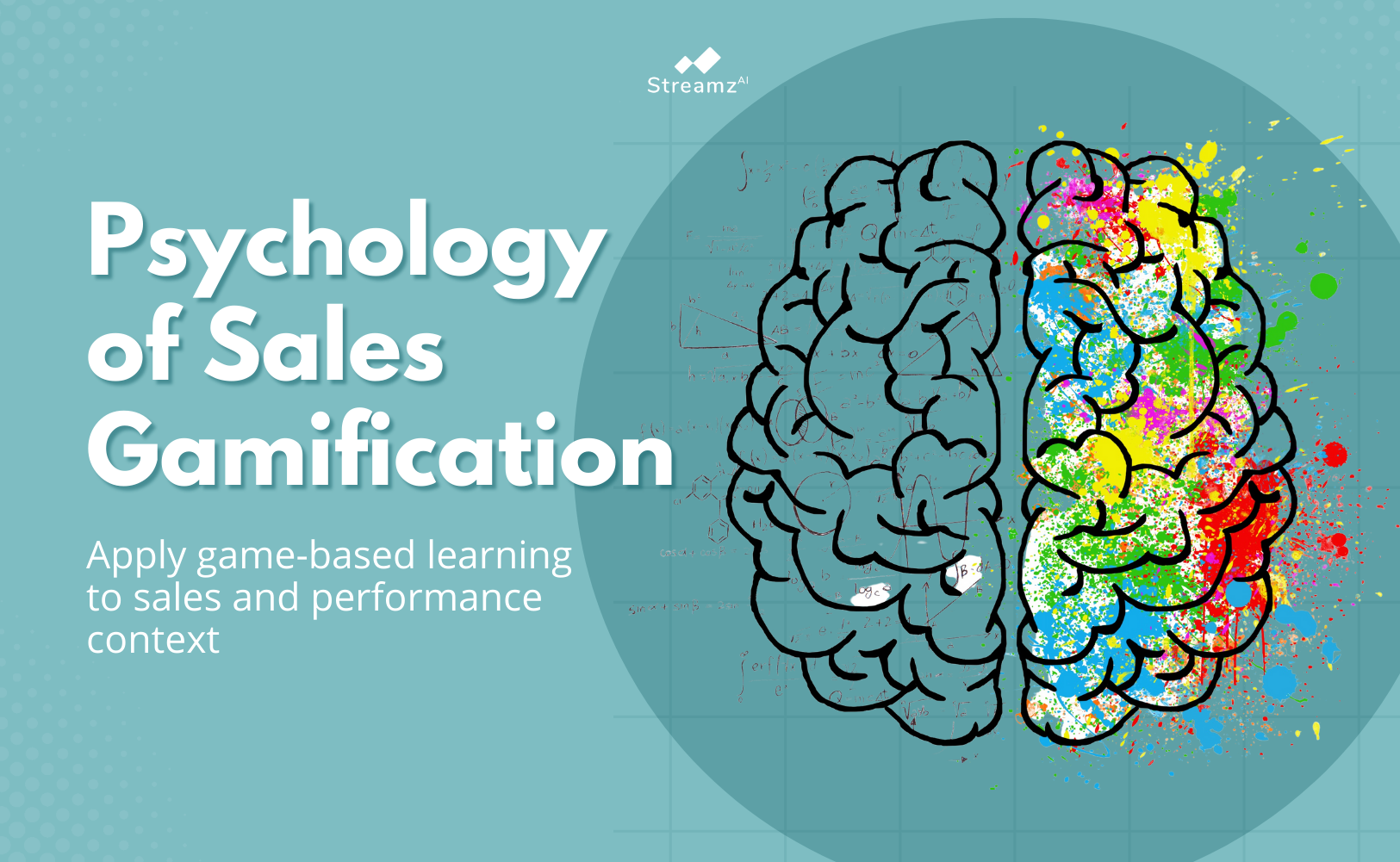Sales and marketing leaders have been implementing sales programs with various gamification design elements to create a focus on specific sales priorities. This blog discusses the psychology of gamification in a sales context and its usefulness to sales leaders.
What is Gamification?
Gamification refers to the use of game design elements in non-game settings. Video games have been extremely popular among all ages solely because they possess a very high level of motivation. In the book, Glued to Games: How Video Games Draw Us In and Hold Us Spellbound, Scott Rigby and Richard M. Ryan argue that good, challenging games make us feel competent and give us a sense of mastery. Autonomy exists when we feel our actions are freely chosen and we have a sense of mission and purpose.
Following are the components we need to apply the psychology of gamification in a sales training and performance context,
- Game: A system in which players engage in an artificial conflict, defined by rules, that results in a quantifiable outcome.
- Elements: are characteristics of real-world games; primarily used to implement psychology of gamification in all settings
- Design: is an explicit process of defining the rules and the flow and finally, non-game contexts are applications of these elements in other areas like learning, sales etc.
For instance, coffee shops offer stamps for every coffee you drink, and collecting 10 stamps gives you a free coffee. While this may seem like gamification, it is just a simple offer. The idea of gamification stems from using various game elements in the design of a program.
Psychology of Gamification: Design Elements
Design elements used in sales gamification programs are the following
- points,
- badges,
- leaderboards,
- performance graphs,
- meaningful stories,
- avatars, and finally
- teammates.
These game design elements provide direct visibility to the users. For this reason, they are the driving force behind successful sales gamification programs. As shared in the article at science direct, below is a summary of the design elements.
Points
Points are basic elements of gamified applications. Rewarded for the successful accomplishment of specified activities, they serve to numerically represent a player’s progress. In fact, one of the most important purposes of points is to provide feedback. That is, points help measure the players’ in-game behavior and serve as continuous and immediate feedback and reward.
Badges
Badges are visual representations of achievements that sales teams can earn and collect within the sales gamification program. They confirm the players’ achievements, symbolize their merits, and visibly show their accomplishment of levels or goals. Firstly, badges influence players’ behavior- leading them to select certain routes and challenges in their conquest. Secondly, as badges symbolize one’s membership in a group of those who own this particular badge, they also can exert social influences on players and co-players, particularly if they are rare or hard to earn. And lastly, they act as a credentialing function.
Leaderboards
Leaderboards rank players according to their relative success, measuring them against a certain success criterion. As such, leaderboards can help determine who performs best in a certain activity and are thus competitive indicators of progress that relate the player’s own performance to the performance of others. However, the motivational potential of leaderboards is mixed. Werbach and Hunter (2012) regard them as effective motivators if there are only a few points left to the next level or position, but as demotivators, if players find themselves at the bottom end of the leaderboard. Designing leaderboards is important to ensure that they are motivational.
Performance Graphs
Performance graphs, often used in simulation or strategy games, provide information about the players’ performance compared to their preceding performance during a game. By graphically displaying the player’s performance over a fixed period, they focus on improvements. Motivation theory postulates that this fosters mastery orientation, which is particularly beneficial to learning.
Meaningful Stories
Meaningful stories are game design elements that do not relate to the player’s performance. Instead, they define the narrative context in which a sales gamification program is embedded. That is to say, they contextualize activities and characters in the game and give them meaning beyond the mere quest for points and achievements.
Avatars
Avatars are visual representations of players within the game or gamification environment. Therefore, the players usually choose or create their own avatars. The most important requirement is that avatars unmistakably identify the players and set them apart. Avatars allow the players to adapt or create another identity and, in cooperative games, to become part of a community.
Teammates
Teammates can be fostered in the implementation of gamification psychology particularly by introducing teams, i.e. by creating defined groups of players that work together towards a shared objective.
Motivational Concepts and Gamification

The influential self-determination theory ( SDT) by Edward Deci, and Richard Ryan when applied to the context of games, clearly shows what drives gamified sales programs. The theory suggests that human beings are inherently proactive and have a strong internal desire for growth, however, the external environment must support this. That is to say, people have certain inertia that they need to overcome to move forward. And gamification does exactly that!
Wanting to do something is called “intrinsic motivation,” whereas, feeling that you need to do something is called extrinsic motivation. Let’s take exercise as an example. People who enjoy exercising are intrinsically motivated. In contrast, people who exercise because their doctors tell them to, are extrinsically motivated. Using SDT, we focus on what sellers need and want to allow them to flourish. As shown in the continuum of motivation graphic, you can move learners from extrinsic to intrinsic motivation.
3 Need Categories of SDT
The three “need” categories that SDT suggests while explaining what is gamification are:
- Competence (Mastery or being effective),
- Relatedness (or social connections), and finally
- Autonomy (need to feel in command).
These motivators come into play in the workplace and help transform behaviors through a positive feedback loop. As a result, these intrinsic motivators are used in gamification psychology to generate results. The table below shows these needs and gamification design elements. Applying these elements in the right context creates the motivation drive for self-determination.
| Psychological Need | Mechanism | Game Design Element |
| Need for competence | Granular Feedback | Points |
| Sustained Feedback | Performance Graphs | |
| Cumulative Feedback | Badges and Leaderboards | |
| Need for Autonomy | Choices | Avatars, work at their own pace |
| Need for Social Relatedness | Sense of Relevance | Social Sharing and Leaderboards |
An excellent example of gamification psychology used in a business context is DuoLingo. A language learning app where over 300 million users learn new languages successfully. Users can progress through different levels to earn badges and feel a sense of achievement. Moreover, they can compete and see each other on leaderboards or unlock special content. The app responds to the core SDT needs of the user and drives up intrinsic motivators.
Implementing Sales Gamification Programs
Successful sales gamification programs need to be designed well. Here are some key steps:
Define the objective of the program
Define your sales objectives for the program. Well-defined goals are critical. These are specific performance goals for the gamified system. For example, improving new product sales, or capturing sales-qualified opportunities, etc.
Describe desired sales behaviors
Describe the behaviors which will improve the sales objectives. Focus explicitly on what you want the salesperson to do and how to measure them. For example, if the objective is to improve new product sales, tasks can include completing a learning module, and introducing a new product to a set of customers and metrics could include assessment scores of new product training and qualified opportunities in the CRM. The metrics need to be quantified and points are an easy way to quantify. For example, you can give 10 points for completing the training module, and give 50 points for scoring >80% in the assessment. The value of points can correspond to the relative value of the activity. Of course, the sales behaviors which are being tracked should promote the objectives.
Understand your sales teams
Put yourself in their shoes to discover their intrinsic desires. What motivates them? Also, what demotivates them? The goal ultimately is for them to complete all the tasks assigned to them. Therefore, it’s important to ensure that various choices are available for differing segments of your sales reps to complete various tasks.
Model the game
Games have a beginning and sometimes an end, but along the way, they operate through loops. Define what the system needs to do as sales reps complete the activity and build a journey. Player actions need to produce feedback from the system like awarding points or badges or seeing a leaderboard which drives the users to take further action. The key element is feedback. Feedback makes games very effective as motivators.
Create fun experiences
Yes, the gamification program is meant for serious business, however, the users need to see fun elements. This unquestionably motivates them to come back and complete the assigned tasks. The question of course is, will the players participate voluntarily? Create social sharing opportunities, fun notifications, and nudges, allowing the creation of avatars.
Summary
To sum up, sales gamification is an emerging field. It requires a great deal of thought about the design of the system. First, you need to understand your sales reps then think of what you would like them to do, and then find the right game elements ( points, badges, and leaderboards) to do that. Sales gamification has proven to drive business success. Using technology platforms like Streamz can help you deploy gamification programs with ease.
Also Read: Leveraging Gamification Elements in Your Sales Training






